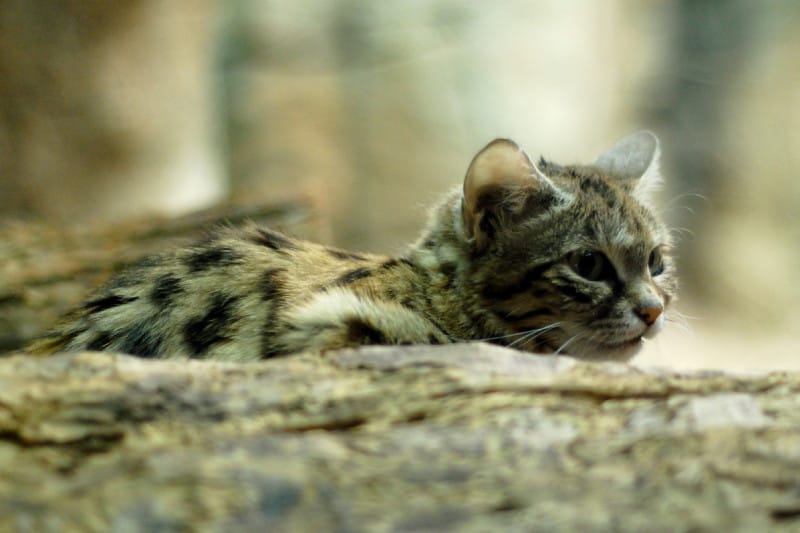
Black Footed Cat Facts
- Most notably, the Black Footed Cat remains one of the smallest known species of a wild feline on earth. Can you believe that this adorable little creature actually ranks as a wildcat?
- The remarkable car also has a highly solitary nature and almost completely nocturnal behavior. Further, this animal rarely emerges from its resting places before sunset, at which time it hunts its prey.
- Due to these factors, men rarely see it, thus we still know little about them. Its numbers appear to be few, however, so the IUCN presently lists the Black Footed Cat as Vulnerable.
- Uniquely, it also seems to be a relatively poor climber for a feline and avoids climbing when possible.
Related Articles
Black Footed Cat Physical Description
Firstly, the common name Black Footed Cat actually remains somewhat deceptive. That’s because, in spite of the descriptive name, only the bottom of the feet appear fully black in color. Yet, the name seems to fit.
The species also displays a moderate degree of sexual dimorphism. The adult male Black Footed Cat averages roughly 4.2 lb (1.9 kg) in weight. Meanwhile, the female usually only reaches 2.9 lb (1.3 kg) in weight.
Additionally, the species remains smaller than many domesticated felines. Head to body length averages roughly 17 in (43 cm) among males. However, the female of the species grows slightly shorter in length.
Its ears also have a rounded shape, and the eyes appear comparatively large. Finally, the fur varies in color from tawny to cinnamon. But, patterns of dark spots forming rings appear on various body locations.
- Kingdom: Animalia
- Phylum: Chordata
- Class: Mammalia
- Order: Carnivora
- Family: Felidae
- Genus: Felis
- Species: F. nigripes
Black Footed Cat Distribution, Habitat, and Ecology
First of all, the amazing Black Footed Cat evolved as native to select portions of southern Africa. Due to this fact, the animal only lives in Namibia, South Africa, and Zimbabwe. It remains unknown if it once had a wider range.
In addition, it inhabits either grassland, savanna, and Karoo semi-desert. The fascinating animal seems to prefer shrub and tree cover. It also may be found at altitudes of as much as 6,600 ft (2,000 m).
During the heat of the day, he resourceful feline takes measures to escape the heat of its surroundings. Therefore, individuals will most typically inhabit small burrows or abandoned termite mounds.
Furthermore, the small felines remain extremely active and highly proficient hunters. Because of its skill, most individuals typically catch a dozen or more small prey each night.
Finally, individuals generally feed on such varied prey as small birds and rodents, hunting these by preference. Yet many will not hesitate to consume insects and spiders opportunistically.
Species Sharing Its Range
Check out our other articles on 7 Stunning European Flowering Plants, Gulper Eel, Mount Erebus, Green Sea Turtle, Bombus dahlbomii, Irrawaddy Dolphin, Mandarin Duck, Fire Salamander
